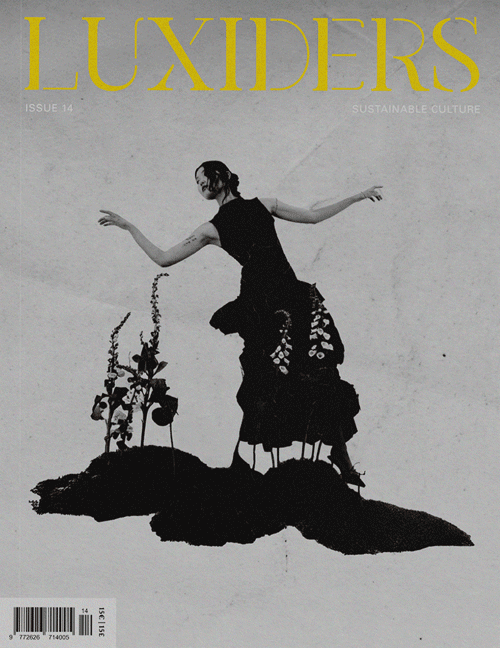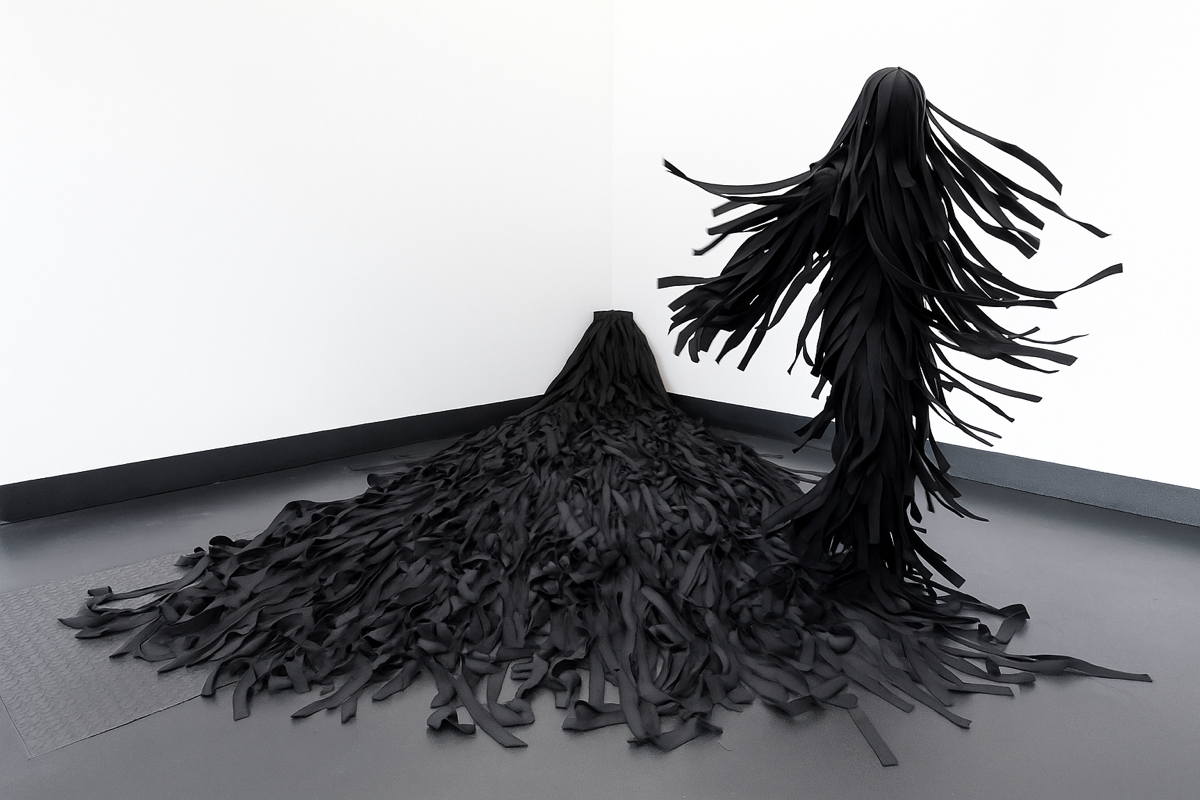
Fashion Positions 2025: Berlin Labels Redefine the Intersection of Art and Fashion
Discover Fashion Positions 2025 at Tempelhof Airport Berlin. From 11–14 September, twenty Berlin labels will showcase independent fashion as art, with sustainability, conceptual design, and social relevance at the forefront.
Berlin Fashion Week 2025 Expands Its Horizons
From 11 to 14 September 2025, Fashion Positions returns for its seventh edition at Hangar 7, Tempelhof Airport — once again transforming Berlin into a stage where art and fashion seamlessly merge. Parallel to Positions Berlin Art Fair, this interdisciplinary platform presents 20 Berlin-based labels, reaffirming the city’s role as a capital for experimental, sustainable, and socially engaged fashion.
In a spatially open, installation-style architecture, garments become more than collections: they are conceptual statements, textile objects, and artistic expressions. Under the motto “Collect Fashion. Wear Art”, the initiative positions fashion far from fast-moving consumerism, advocating instead for craftsmanship, critical thought, and the cultural value of clothing.
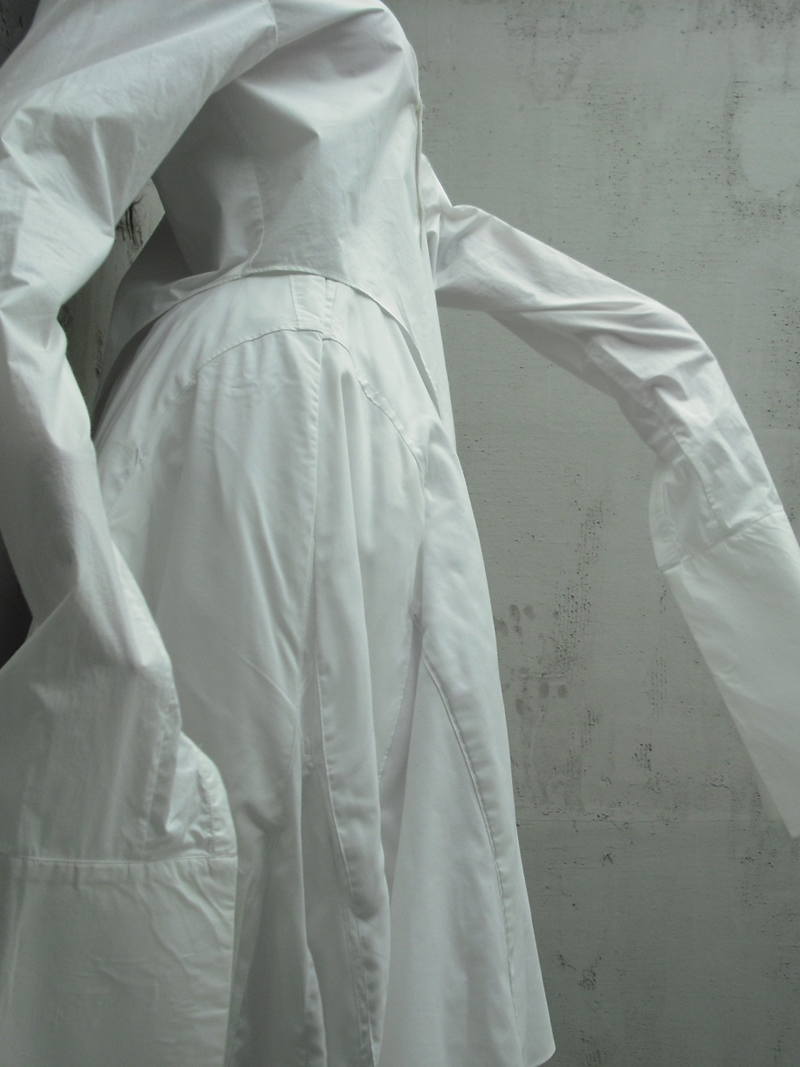
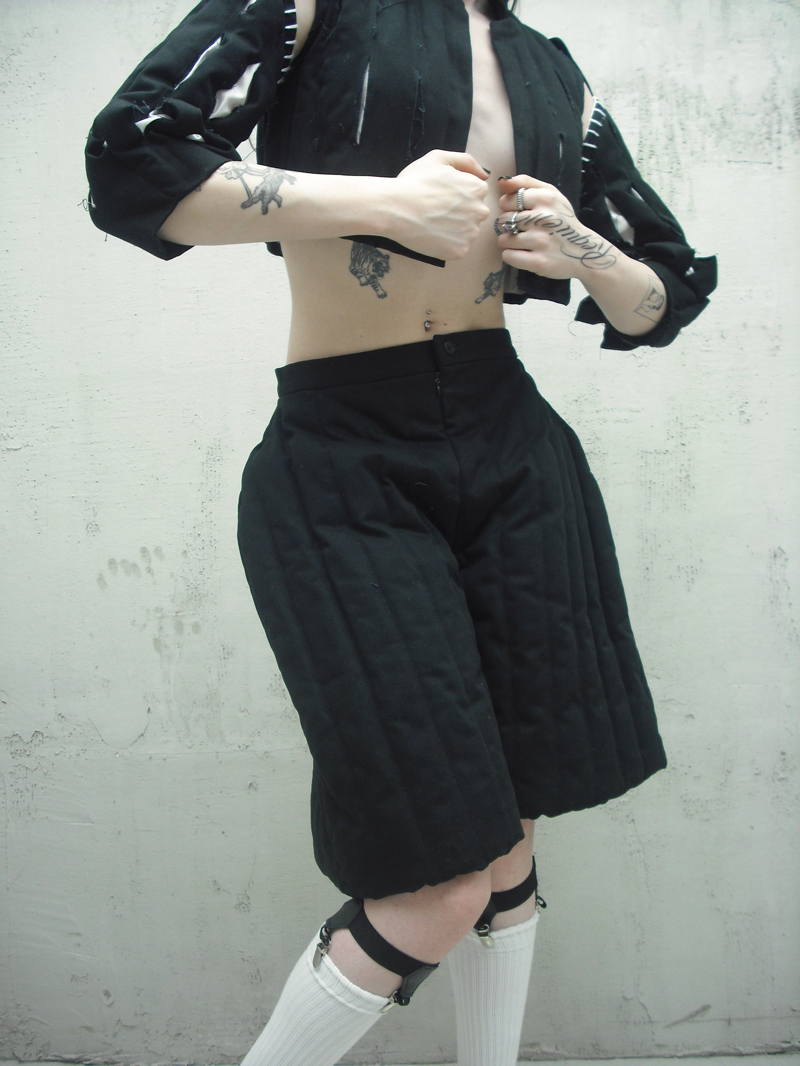
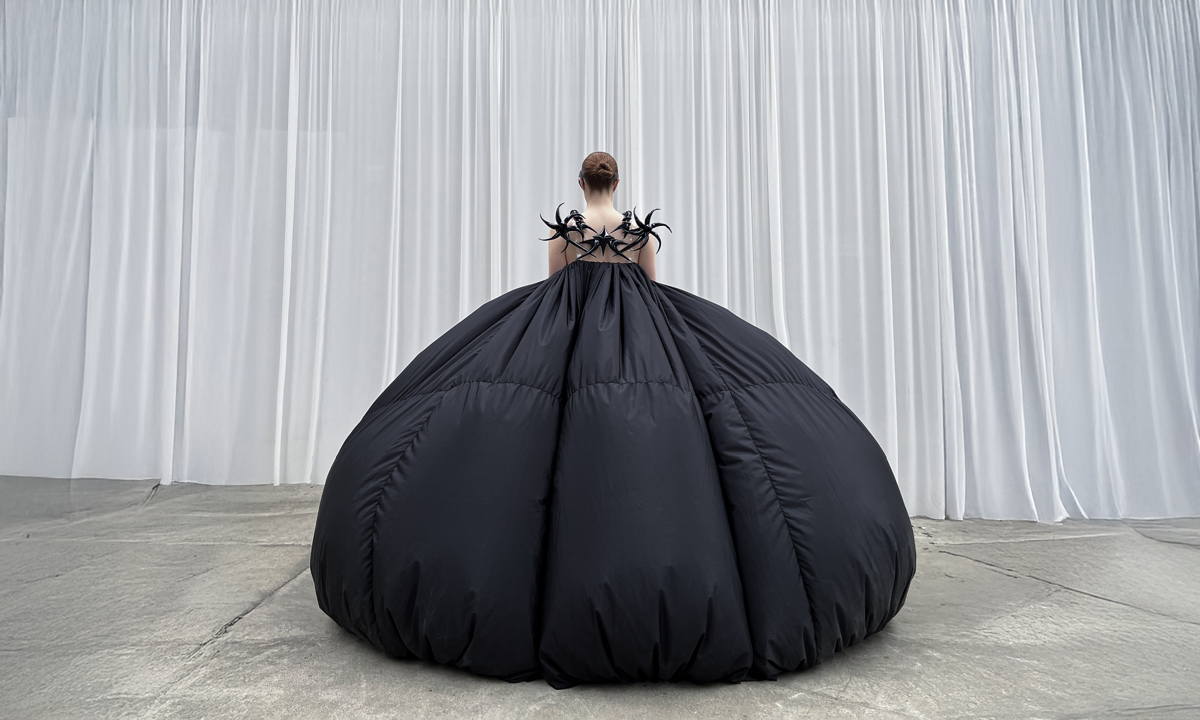
Best Of Berlin’s Independent Voices
From a large pool of applicants, curators Diandra Donecker (Villa Grisebach) and Dao Tran (journalist, editor) selected 20 labels whose work reflects material innovation, aesthetic experimentation, and social relevance. Their combined expertise in fine art, editorial narrative, and visual communication brings a sharp curatorial lens to the event.
The Participating Labels in the next exhibition are
Alexander Gigl is the designer behind the eponymous label founded in 2024 during his studies. Gigl finds beauty in destruction and the unfinished, designing garments that leave space for transformation, so that wearers can recontextualize and repurpose them in the future. Drawing inspiration from historical aesthetics and tailoring techniques, he combines past and present through a queer lens.
The installation presents garments that transform from one body, in textile form, into another. They are connected by ropes, which form part of one of the garments. The work explores the cycle of destruction and reconstruction, highlighting the transformative power of clothing and the body—the metamorphosis of one form to enable the creation of another.
CBUI is a Berlin-based fashion designer with Vietnamese roots. Growing up in a time of social change between tradition and the digital age, he draws inspiration equally from cultural heritage and the contemporary virtual world, where reality and digitality increasingly merge. CBui’s design philosophy is rooted in close observation of the everyday. He discovers poetry in the overlooked, beauty in the absurd, and possibilities in what seems impossible. Unexpected elements and unconventional materials are transformed into wearable narratives.
The dress in the exhibition is inspired by theories of wind movement and unfolds its volume through the motion of the wearer. In the installation, where the garment is presented in a static form, a fan generates air circulation to reveal its characteristic shape. Through its deliberately reduced staging, the dress is placed at the center as a standalone artwork. It speaks of lightness, movement, and the dialogue between technology and fashion – a quiet invitation to reflect on the influence of nature in design.
Claudia Skoda is regarded as an icon of Berlin’s avant-garde fashion. In 1975 she founded her own label and revolutionized knitwear by using unconventional materials such as lurex, raffia, drinking straws, or cassette tape. After the fall of the Berlin Wall, she remained in Berlin and opened shops on Ku’damm, in Mitte, and Prenzlauer Berg. Her clientele has ranged from Cate Blanchett to Ridley Scott. In 2021, the Kunstbibliothek Berlin honored her work with the major retrospective Claudia Skoda. Dressed to Thrill.
At this year’s FASHION POSITIONS, she presents a specially developed crochet technique that combines traditional craftsmanship with contemporary aesthetics. This new method lends the textile objects of her installation a sculptural lightness and once again underscores her pioneering role at the intersection of fashion, art, and craft.
Mira von der Osten is a German fashion designer, trained at Parsons School of Design in New York and founder of the Berlin-based label CRUBA. Founded in 2009 amidst the creative energy of Berlin-Mitte, CRUBA has since developed into a distinct voice within the independent fashion scene.
For this year’s installation, CRUBA uses a VHS copy of the anime series Alice in Wonderland (1983). What appears to be a black tape reveals vibrant, floral imagery that, through artistic transformation, becomes a hallucinatory scenery. Projections of blossoming double images dance between wall and object, while surreal “rose formations” insert themselves into the scene like enigmatic figures – a visual wink that recalls the dreamlike and slightly dizzying moments of the film. The work plays with the interplay of reality and illusion: the gaze loses track of beginnings and endings, wandering between clearly recognizable forms and abstract patterns. In this way, the videotape itself becomes a poetic carrier of a new visual language.
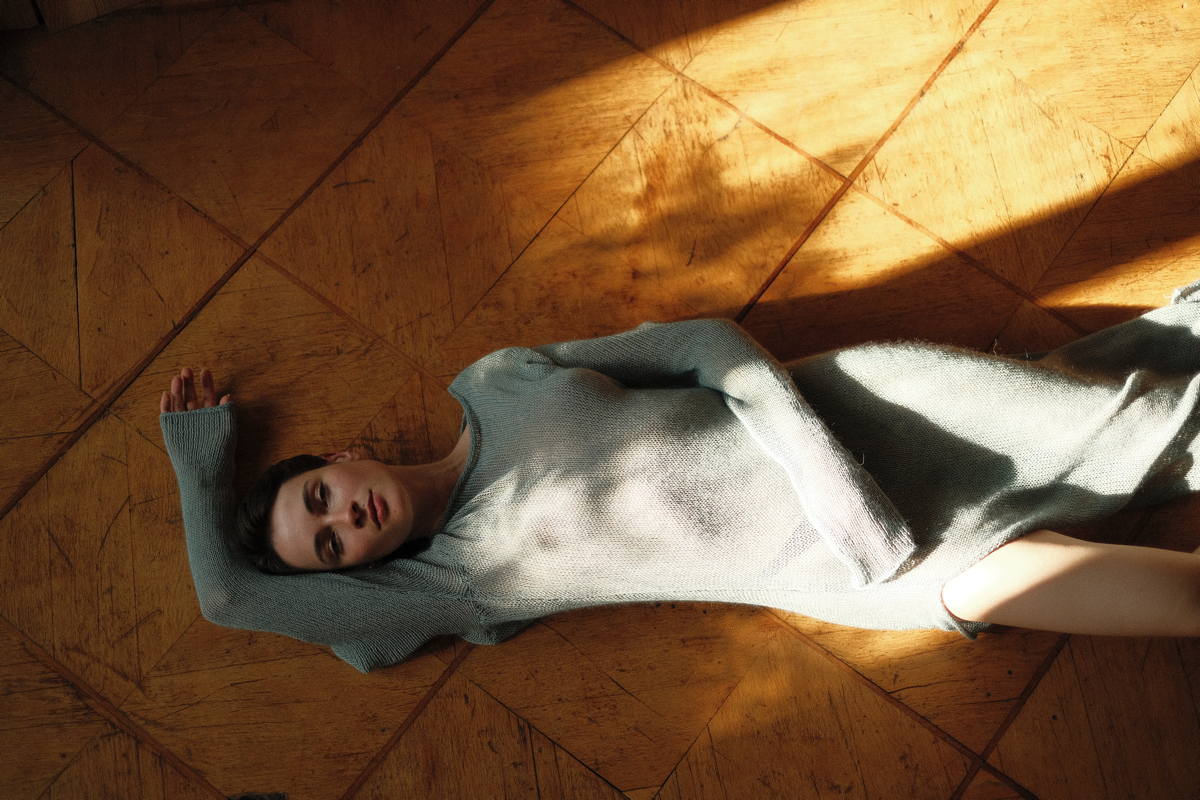
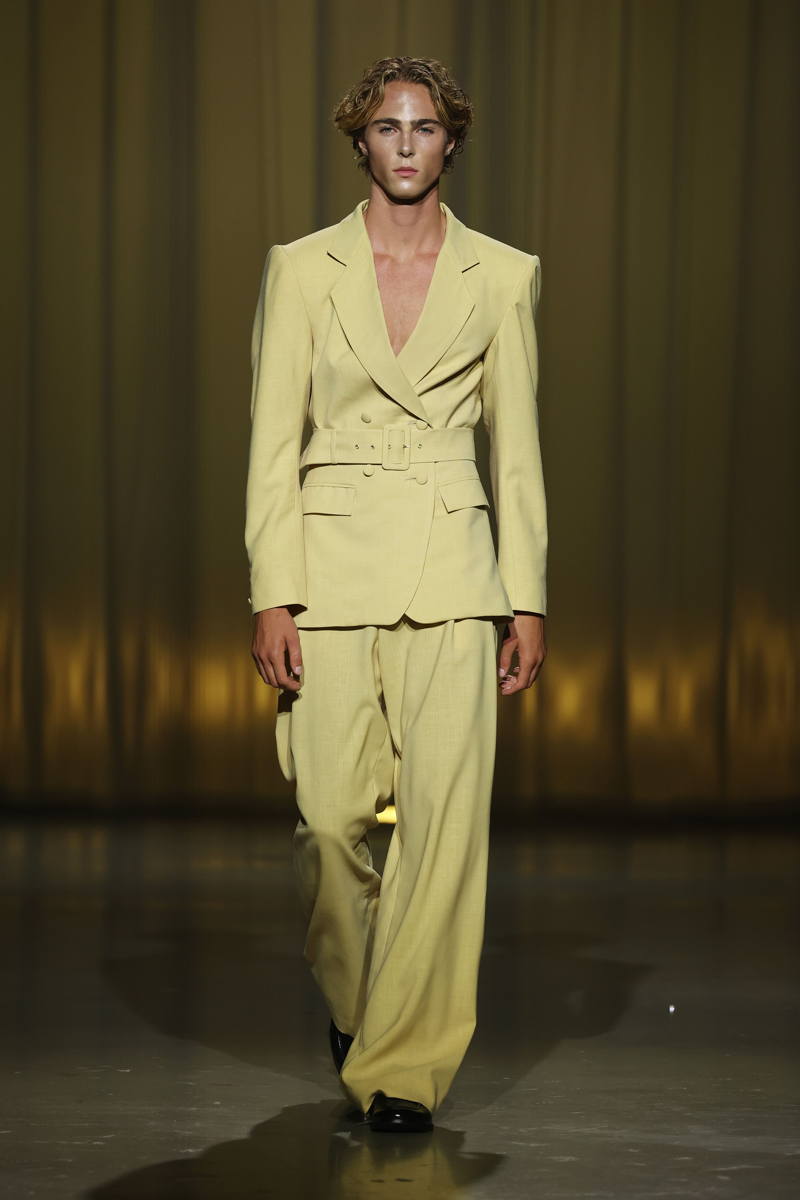
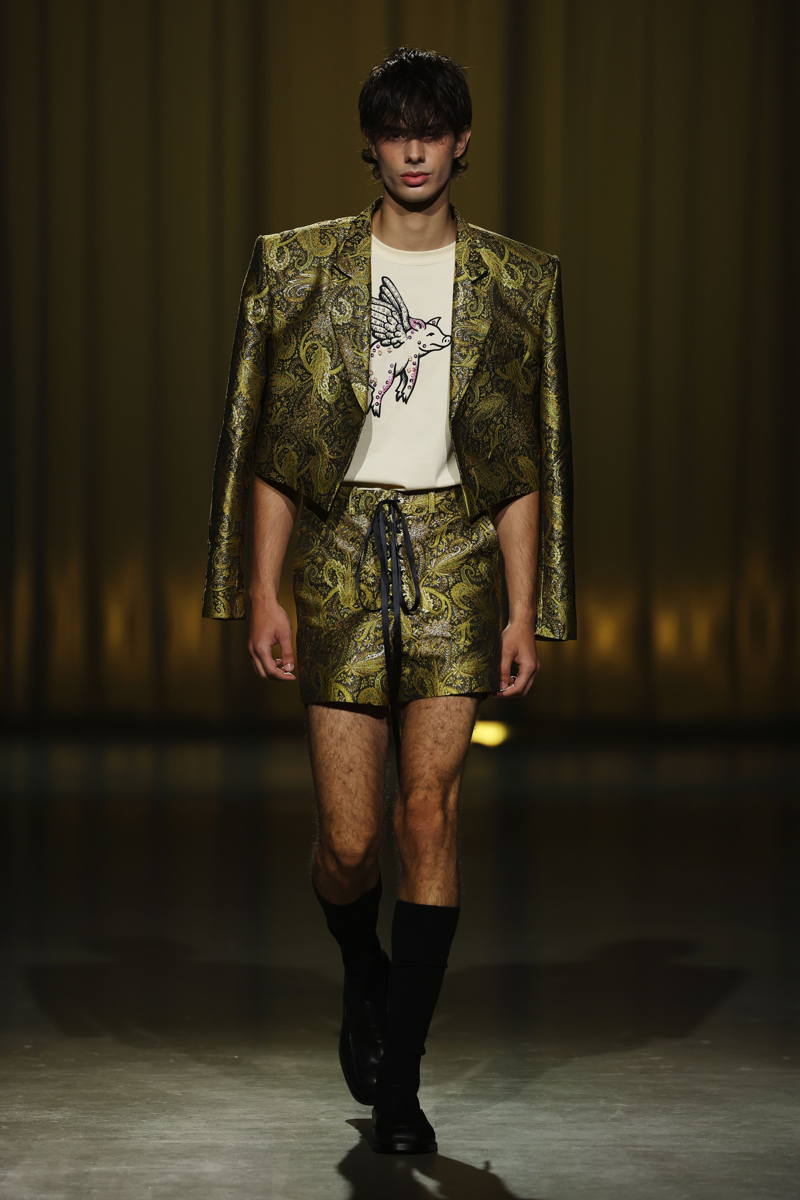
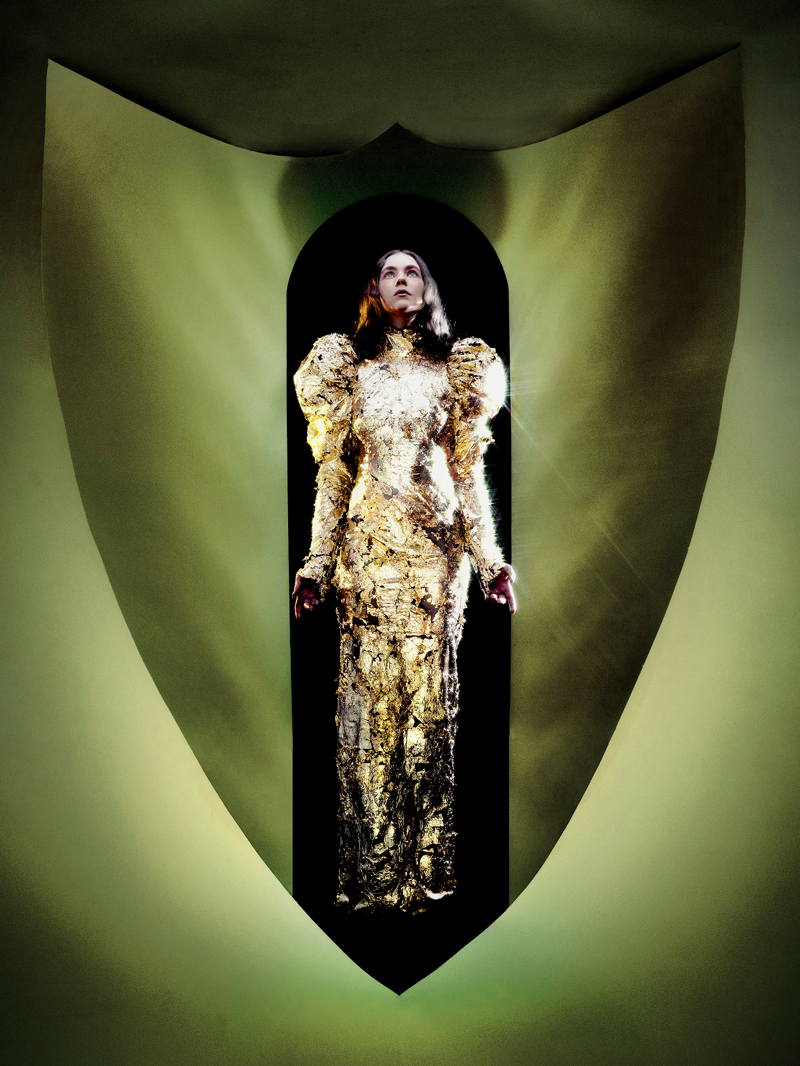
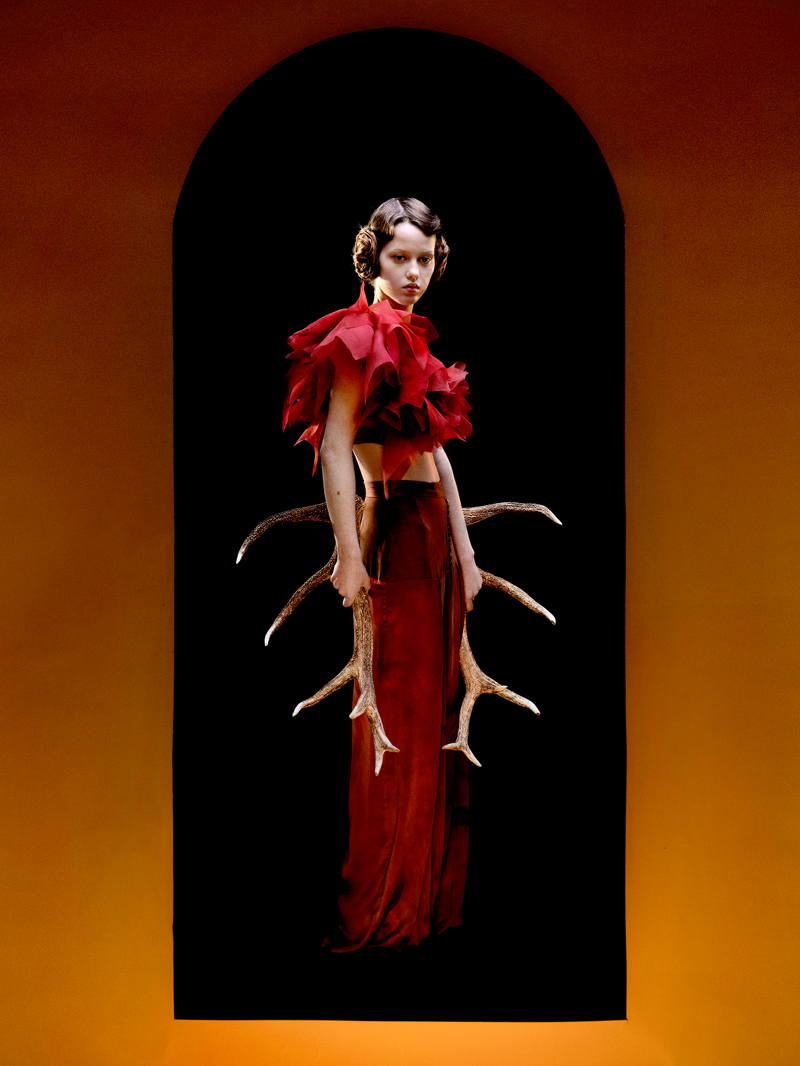
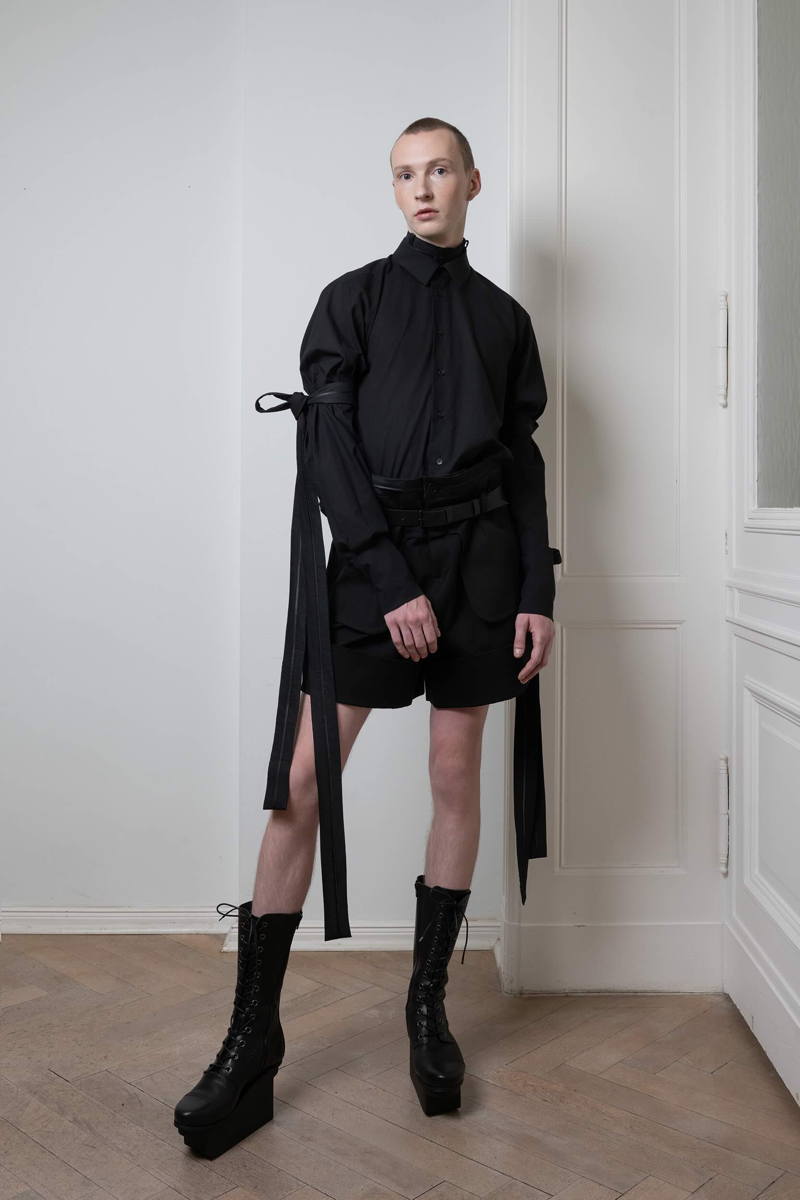
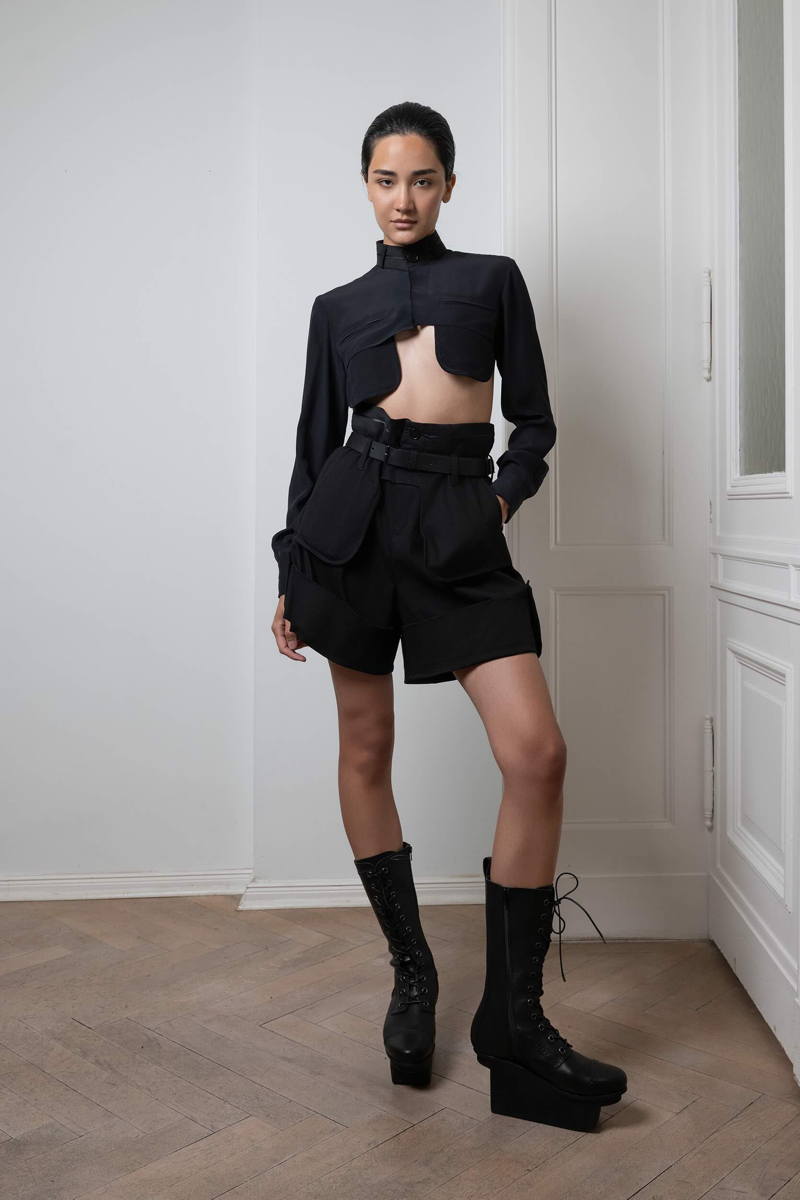
Danny Reinke is the co-founder and designer of the eponymous Berlin-based fashion label, which he runs together with Julien Kelch. Growing up in a family of fishermen on the Szczecin Lagoon, he developed an early awareness of nature, resources, and sustainability. These values continue to shape his work today—from the use of deadstock materials to bespoke pieces that emphasize longevity over mass production.
The installation stages a symbolic hunting scene: a hunter faces the mythical creature of the unicorn. The ground, covered with bark mulch, leaves, and forest plants, creates a dense, atmospheric woodland setting. In contrast to this realistically reconstructed forest floor stands the surreal figure of the unicorn, embodying freedom, innocence, and the unattainable. The Hunt alludes to the eternal tension between humanity and nature, violence and protection, desire and untouchability. The attempt to hunt the fantastical becomes a metaphor for the conflict between human greed and the search for freedom.
Driven by a desire to create worlds and tell stories that reflect the full spectrum of emotional experience, Elodie Carstensen develops demi-couture where neo-romanticism meets futurism. At the intersection of modern femininity and theatricality, her poetic designs emerge as a natural consequence of a society of spectacle.
Inspired by the contradictory iconography of Joan of Arc – warrior, saint, witch, rebel – JNN D’RC deconstructs her narrative into fragments. The collection merges regal silhouettes with raw materials: dyed coffee sacks meet flowing silk, while 24-karat gold leaf envelops a dress that dissolves with every movement – a vanishing statue of a saint who was never just one thing. Between luxury and roughness, the designs explore themes of female rage and veneration, ritual and devotion.
Esther Perbandt is the designer behind her Berlin-based fashion and jewelry label, founded in 2004. Perbandt is not only a contemporary fashion designer but also a visionary, performer, and artist working at the intersection of fashion and art.
The work originally stems from Perbandt’s solo exhibition at Galerie Jochen Hempel in Leipzig (2021). A severe water damage in storage months ago required days of hot-air drying and constant turning. The result was an almost irretrievable, oversized textile knot—resembling wild, matted hair after a long motorcycle ride. Just before discarding the piece, the idea for ORDER / DISORDER emerged: a live performance over several days attempting to bring structure and order back into the textile chaos.
In the three-day performance, Esther Perbandt herself becomes part of the entanglement. Dressed in a chameleon-like full-body costume made from the same black cotton strips, she visually merges with the work. As a living component of the sculpture, she remains inside it – combing, sorting, disentangling. A physical as well as meditative engagement with structure and chaos.
Fiona Bennett is a visionary and internationally renowned hat artist. With a refined sense for aesthetics and functionality, she creates unique hats that are not only stylish but also meaningful, reinterpreting a nearly forgotten craft in a contemporary way. As a haute couture milliner, she has collectors all over the world.
With her Survival Hat collection, Fiona Bennett tells stories of resilience and self-discovery. The hats act as protective oases in turbulent times, inviting wearers to question their identity, uncover inner strength, and find the courage to face life’s challenges. Carefully selected materials bring together sustainability and functionality. Durable felt and unexpected found objects merge into wearable artworks. They emphasize connection to the earth and to one another, making each Survival Hat a companion for body, mind, and soul.
FORMAT: is a Berlin-based jewelry label that explores identity, transformation, and individual expression from an interdisciplinary perspective. Founded in 2025 by Izabella Haldzinska and Antonia Sieve — a queer designer duo who met during their fashion design studies and have since realized their visions side by side — the label defines itself as inclusive, gender-neutral, and accessible.
Liminal Forms invites us to perceive space, body, and object as an ongoing dialogue: a moment of transformation in which jewelry becomes a bearer of identity and a nonverbal medium of communication between material, wearer, and environment. Suspended moss sculptures, delicately fastened to fine steel cables, alongside moss-covered concrete foundations. Raw materiality of brutalist architecture meets the vitality of moss and plants – a symbiotic tension between industry and nature. Accompanied by a soundscape of urban atmospheres, fragmented voices, and subtle sonic layers
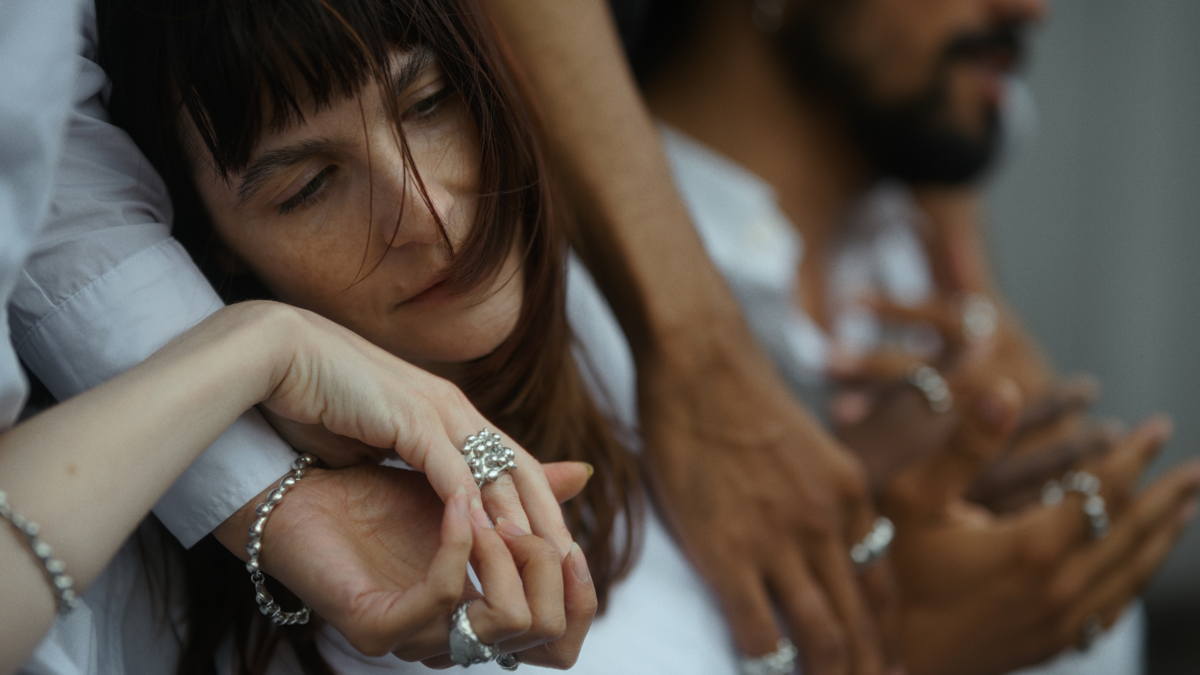
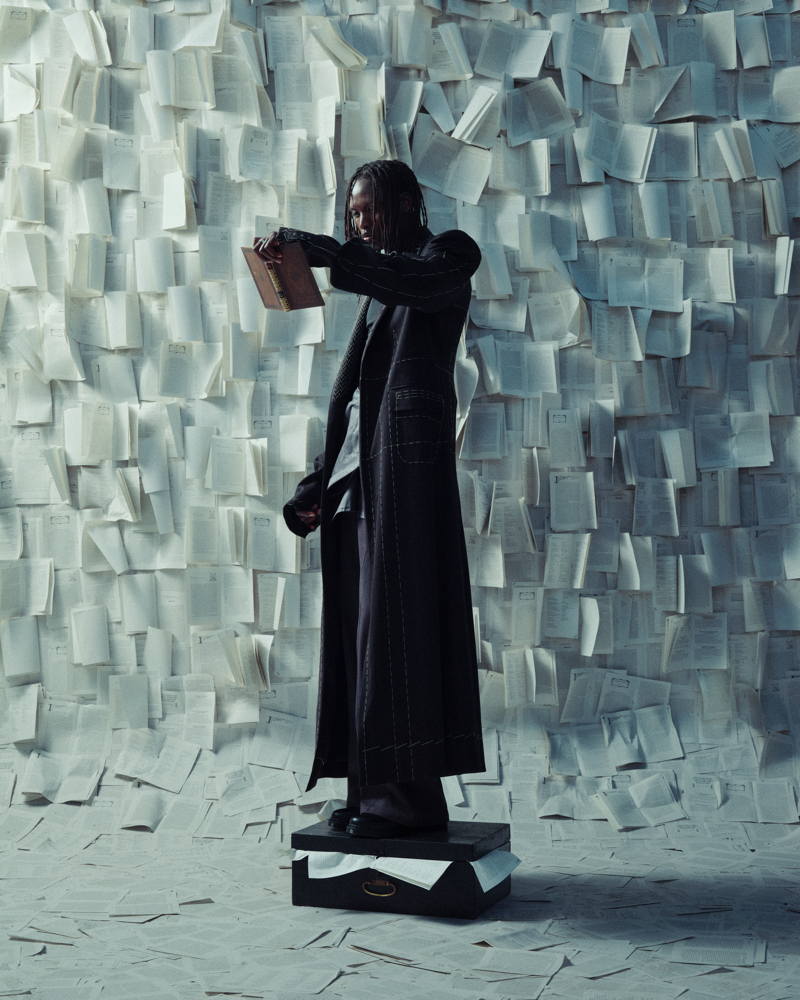

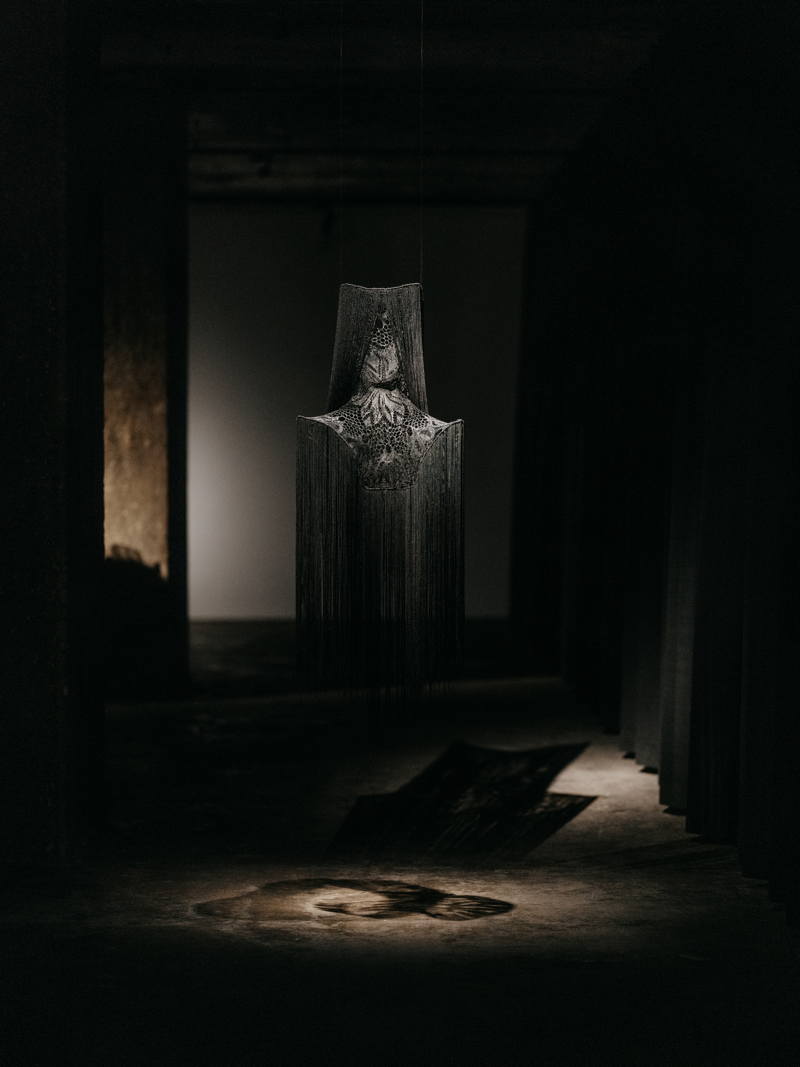

Haderlump Atelier Berlin was founded in 2021 in Berlin. The label approaches fashion as an artistic medium that tells stories and connects textile forms with conceptual depth.
In front of the paper installation—comprising nine narratives about Haderlump Atelier Berlin—stand three dresses representing the label’s last three collections. The installation references the most recent collection: the Spring/Summer 2026 show “EX LIBRIS”, in which two 4×3 meter paper boxes were used as stage design on the runway. The displayed dresses are: Look 26 from SS26 “EX LIBRIS”, a dress made from ramie (a linen-like fabric); Look 26 from AW26 “SOLIVAGANT”, a one-sleeved dress in grey denim; and Look 21 from SS25 “AERO”, a white dress crafted from an old parachute.
Karen Jessen, originally from North Frisia, trained as a tailor in Berlin before studying fashion design and pattern making. In 2012, she founded her own label. Her creative spectrum spans fashion, costume, and interior design, with her works situated between sculpture and wearable art.
A large-scale, translucent textile installation unfolds with a floating presence in space. Delicate fabric panels generate a poetic sense of movement – a fragile apparition that fills the room with lightness and quiet tension. Luftgewächs opens a space where textiles transcend their conventional role – not as decoration, but as a self-assured, structural artistic force.
Driven by the desire to reclaim and rewrite the narrative of femininity, Lilian Brade consciously challenges taboos surrounding the female-identified and queer body. Her work subverts traditional notions of beauty and presents femininity in all its facets.
Birth, development, sexuality, motherhood, death, rebirth—this is the cycle explored in “The Feminine Urge”, an interdisciplinary work that unites fashion, performance, and film. At its center: monstrous femininity.
Marie-Louise Müller x Ute Faber is another of the designers who will be part of this exhibition. This slow fashion designer from Hessen, currently based in Berlin, handcrafts garments that are both concept-driven and emotionally expressive. She approaches her work with the belief that responsibility can fuel creativity, given how the demands for sustainable practices are expected of designers. Working within the traditions of haute couture and staying true to her core principles—such as working exclusively with natural fabrics and incorporating upcycling practices—she strives to make choices that reflect care, intention, and justify a long-term spot for myself in the industry.
My work has been featured at Der Berliner Salon (2025) and rewarded with the Best Craftsmanship award at Neo.Fashion (2024) —experiences that have cemented my dedication to operate through a slow fashion lens.
Maximilian Gedra, the designer behind the high-fashion label, has brought a radically avant-garde signature to the international fashion scene. Born in Mannheim and deeply influenced by Berlin’s pulsating avant-garde culture, Gedra developed an early passion for deconstructing traditional fashion aesthetics.
The art installation THE COUTURE OF REBIRTH creates a space where fashion, art, and artisanal precision converge in a conceptual interplay. At its center are two couture pieces, remarkable not only for their materiality but also for their formal clarity and depth of detail: one crafted from over 35,000 hand-sewn upcycled buttons, the other composed of 26,000 hand-arranged safety pins. Behind them unfolds a three-dimensional spatial composition—an immersive translation of the label’s aesthetic vocabulary: material, structure, form.
The Berlin-based fashion label Nadine Aurin was founded in 2024 and stands for conceptual design that critically and sensitively reflects social and political issues. Fashion here is understood as a medium for reflection, activism, and change.
Weib (Woman) creates a striking contrast between delicacy and resistance, nostalgia and rupture. The installation invites viewers to question power structures that allow and conceal private acts of violence. It is an artistic engagement with the role of women within a system that often fails to protect them adequately.
Founded in 2023 in Berlin by Estelle Adeline Trasoglu, Plaid-à-Porter is a love letter to the invisible stories of vintage textiles. French tapestry wall hangings, hand-crocheted plaids, century-old patchwork quilts—relics of past lives—are not merely recycled here; they are ritually transformed. Each piece becomes wearable art, a story to wear, a celebration of traditional craftsmanship.
Through her project, Dangerous Liaisons, we find an intimate scene—somewhere between the 18th century and the present. A table covered with antique crochet cloths. On it: an open epistolary novel, two wine glasses, heavy silver, the sweet abundance of grapes. A handwritten letter recounts desire and betrayal.
RauFaser is a Berlin-based fashion label that connects art, community, and craftsmanship to create clothing as a form of individual expression.
Four complete looks, shaped in epoxy resin, are frozen on white monobloc chairs – a suspended snapshot of everyday life. Behind them, reflective foil mirrors the scene, integrating visitors into the work. The mirror view not only allows self-positioning within the scene but also invites viewers to see themselves as part of RAUFASER and to photograph the experience. The installation highlights the brand’s central idea: fashion as a collective, interactive experience that connects rather than excludes.
Founded in 2024 by Cristian Huygens and Natalia Golubenko, Selva Huygens is a Berlin-based label that merges sustainable fashion with avant-garde design. Cristian, originally from Argentina, brings a background in architecture and industrial design. Natalia, trained in international journalism, integrates multimedia art, performance, and fashion.
The installation Just Born displays the materials used in working with upcycled car parts: bumpers, doors, trunk lids, headlights, and various plastic components, serving both structural and aesthetic functions. At the center stands a mannequin wearing a look from the ready-to-wear collection, combined with a reshaped and heat-formed BMW bumper as a wearable sculpture – a symbol of the transformation of industrial waste into functional fashion and wearable art.
Through her artistic narrative, Vanessa Baernthol reflects on the fusion of feared artifacts with the graceful touch of the past in a contemporary context.
The installation “Born In Two” interprets the unpublished Twin Look from the SS26 VENEER collection. Twin, birth, fabric—pulled from the loom, unrolled, unraveled, transformed into a dress, a form, a presence. Duality and opposites in balance. Connection, curiosity, release. Transformation as the key to inner freedom. Facets of the self—consciously lived, consciously hidden. Moments that repeat, resemble—yet never duplicate.
Since 2025, Yannic Pretzlaff has been developing works at the intersection of fashion, sculpture, and space. Trained as a tailor and shaped by his fashion design studies at the Universität der Künste Berlin, he understands clothing as a medium that negotiates formal and spatial questions.
The selected works document the path to the final garment: experimental silhouettes and material studies form the foundation for Pretzlaff’s modular, transformable designs in the spirit of Constructed Comfort, exploring the tension between support and freedom, body and space. His approach combines precise craftsmanship with conceptual research, using material, form, and silhouette as the starting point to create clothing as an architectural, wearable experiment—autonomous as an object yet fully functional.
This year also features a special presentation by Caroline Kynast: MÄNNERSACHE, a photographic exploration of masculinity as creative, observable, and staged reality. A portion of proceeds from exhibited works will support a charitable cause — reinforcing the event’s ethical foundation.
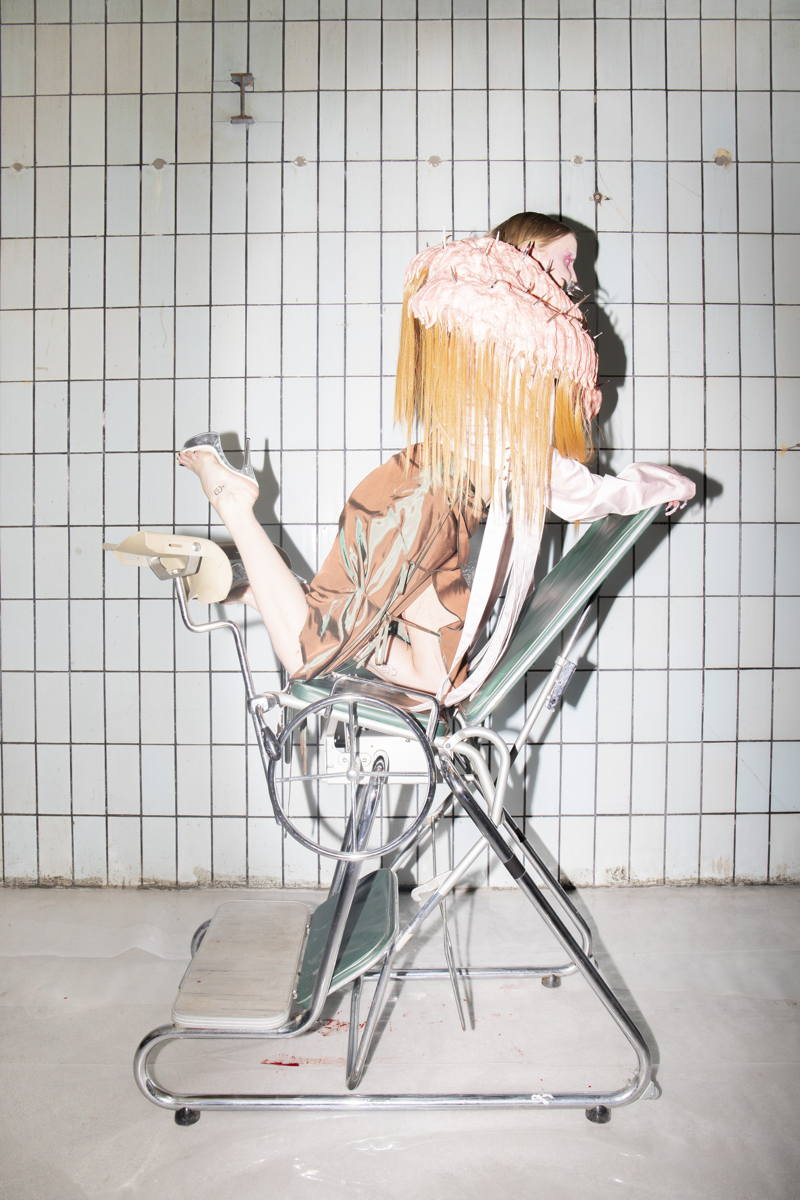
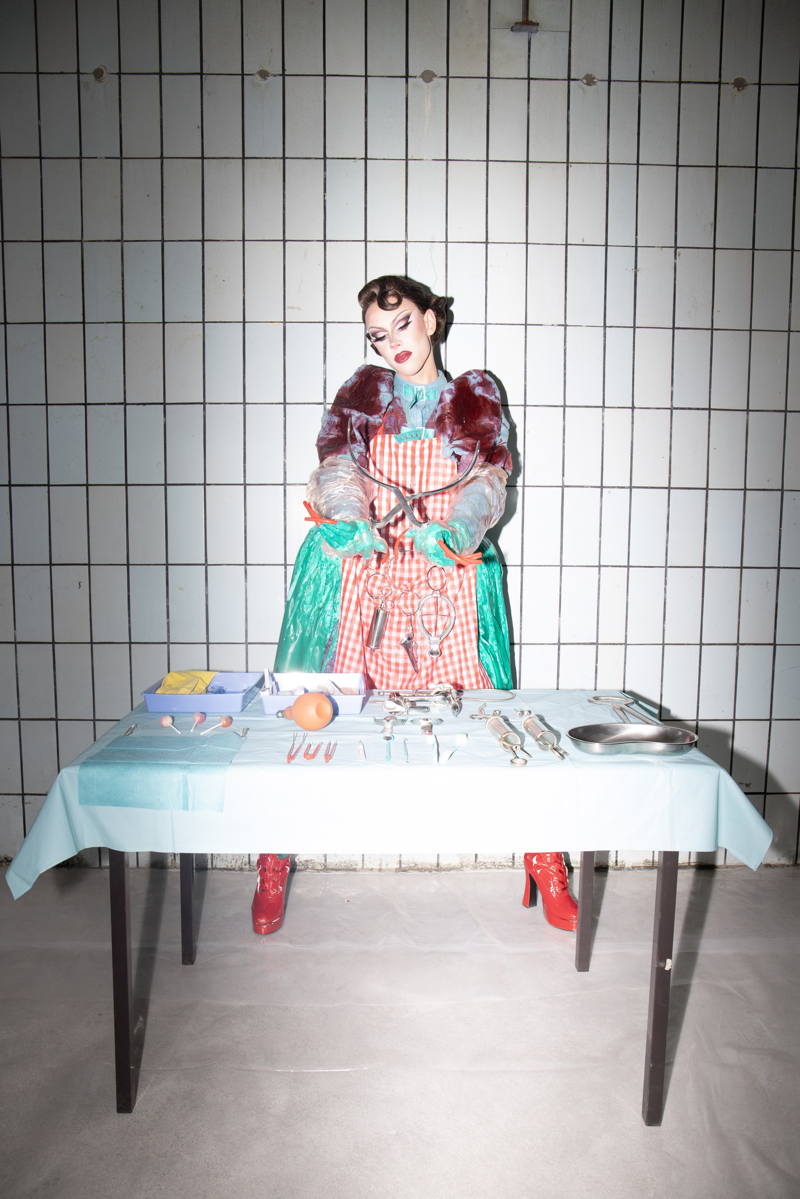
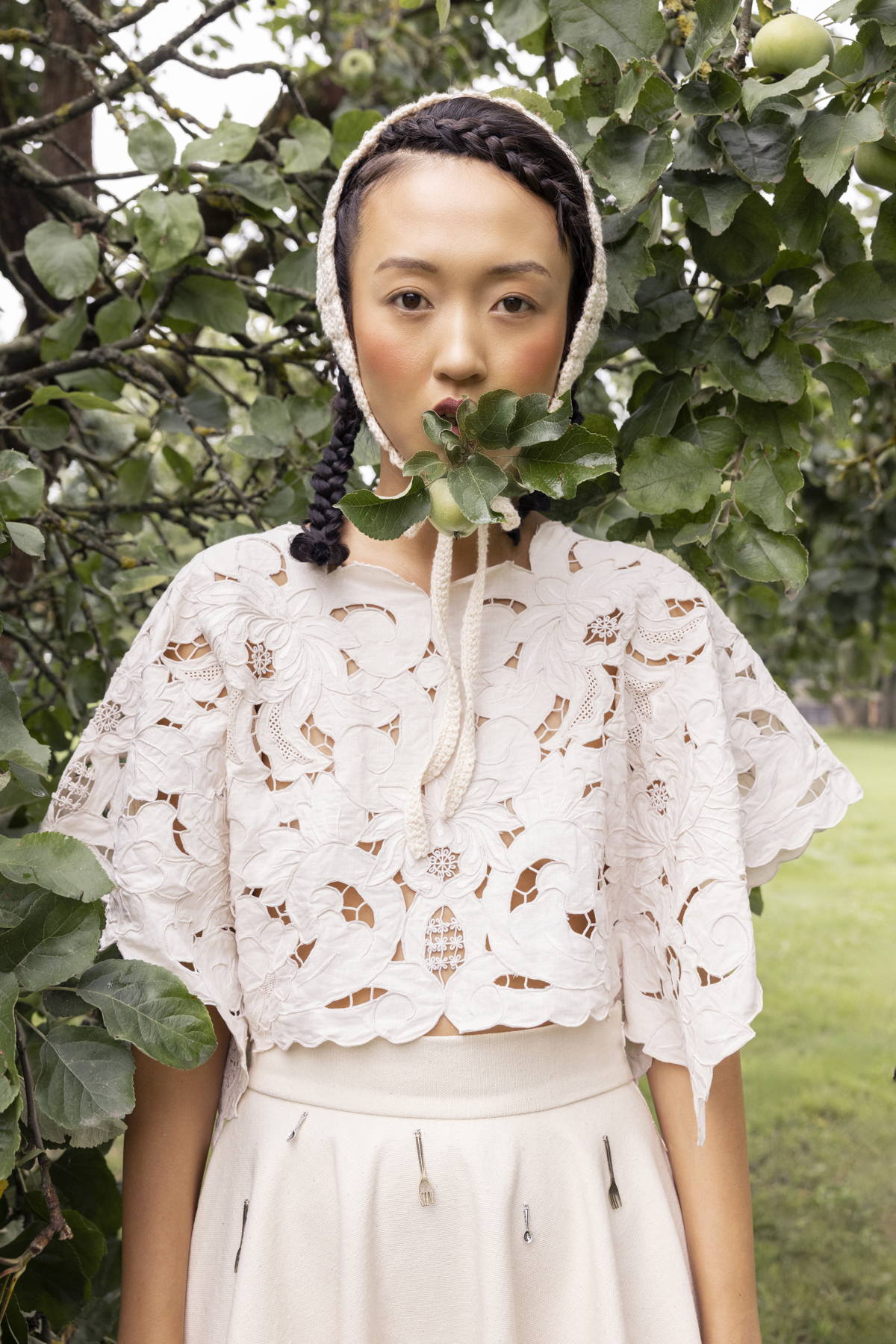
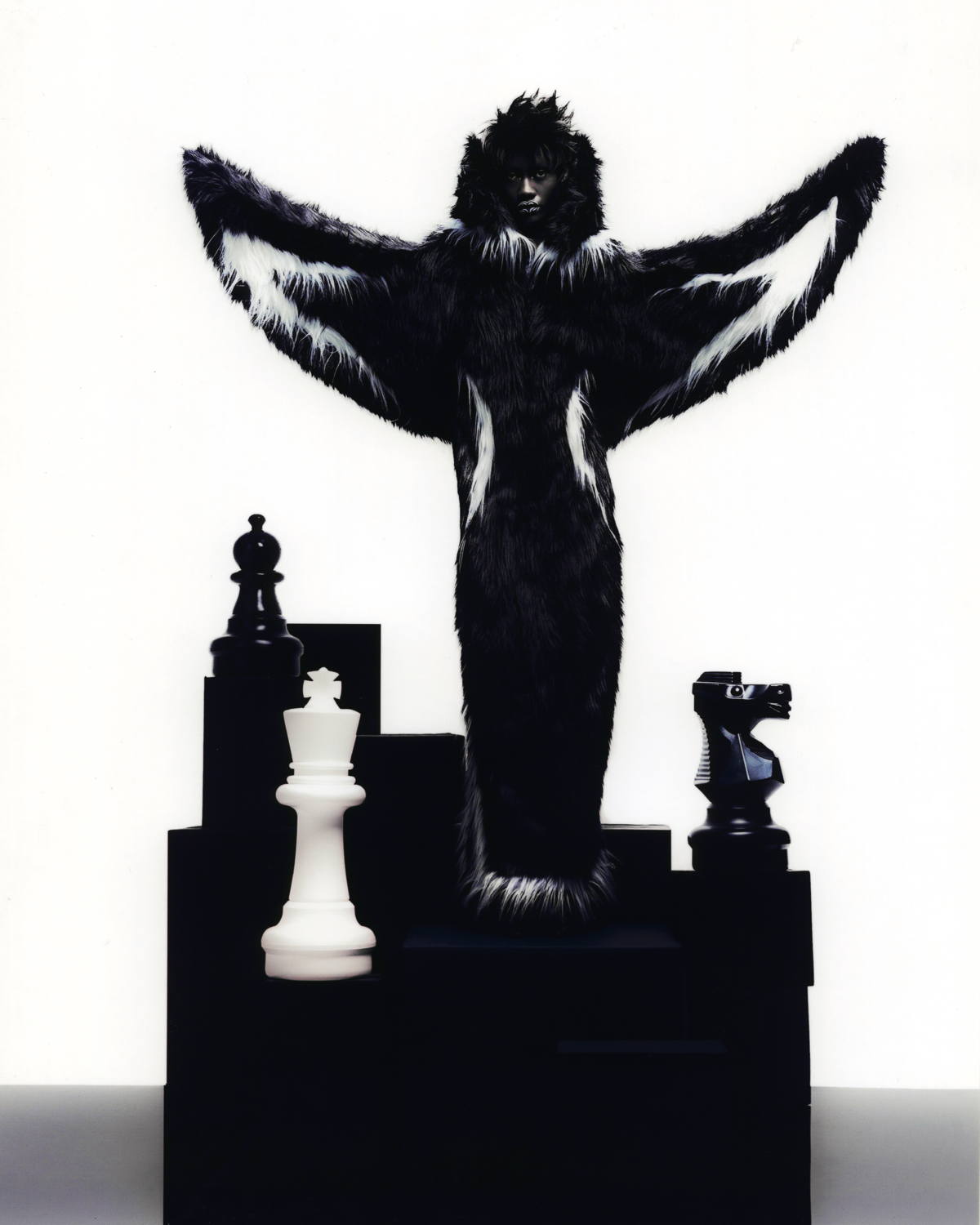
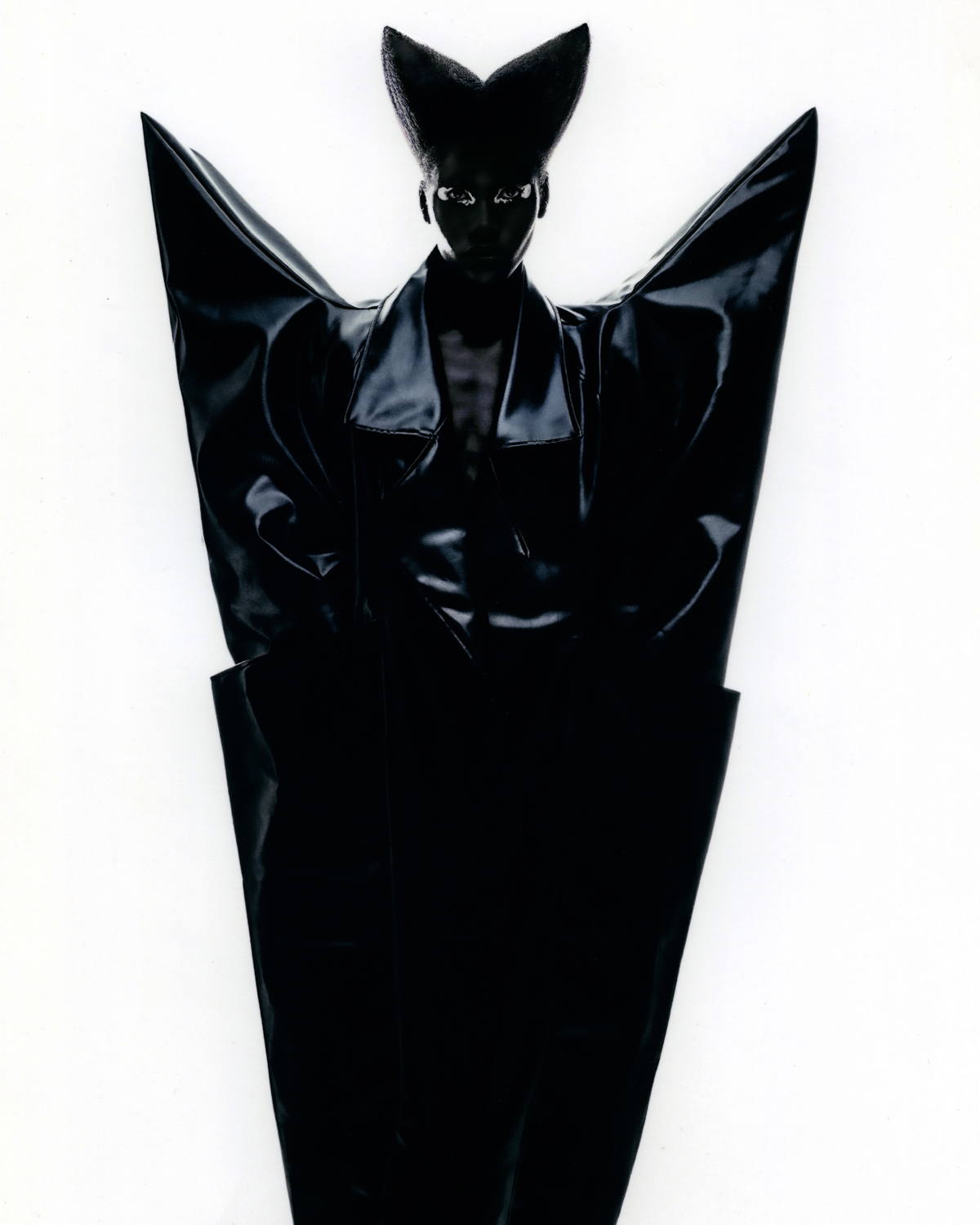
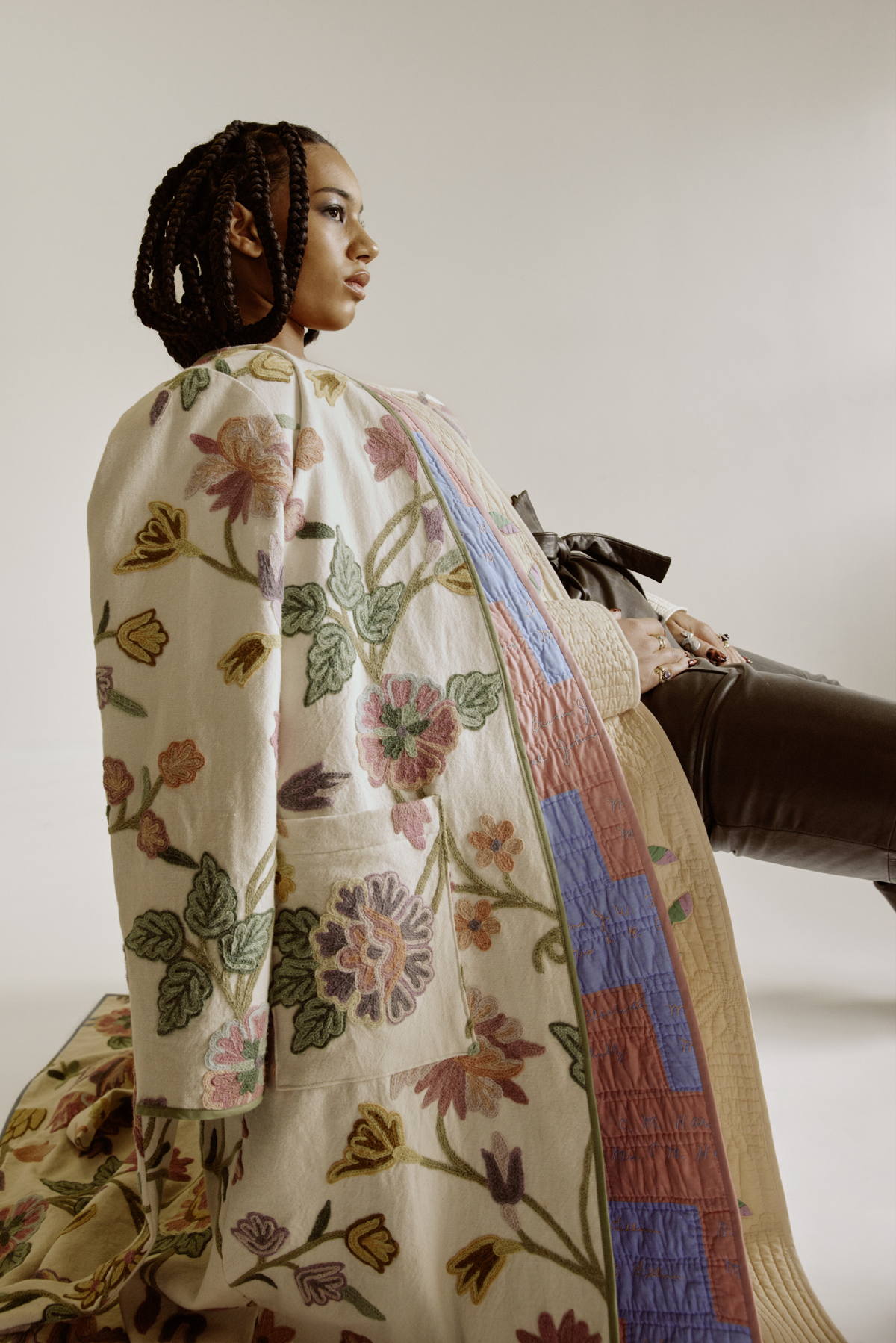
Why Fashion Positions Matters
In an era of greenwashing and fast fashion, Fashion Positions insists on authenticity. Its installation-style presentations resist simplification, demanding time and attention. Each garment becomes a dialogue: between material and maker, between form and society, between art and the wearer. As part of Berlin Art Week 2025, the platform continues to refine its role as a unique bridge between disciplines. Since its foundation in 2019, Fashion Positions has given independent fashion labels a platform outside of purely commercial formats. “From the beginning, our goal was to present fashion in a context that doesn’t reduce it to function or commerce,” explains Kristian Jarmuschek, founder of Fashion Positions. “These labels work creatively, conceptually, think socially, and design with conviction — and that deserves space.”
In this spirit, the event treats fashion as a cultural force: an art form that responds to social and environmental challenges. Visitors experience Berlin labels not as products, but as ideas woven into textiles — inviting reflection on sustainability, identity, and the narratives that garments carry.
Alongside the exhibition, the Fashion Passion Shop allows visitors to purchase selected pieces directly from the labels. This retail experience aligns with the event’s ethos: slow fashion, conscious choices, wearable art.
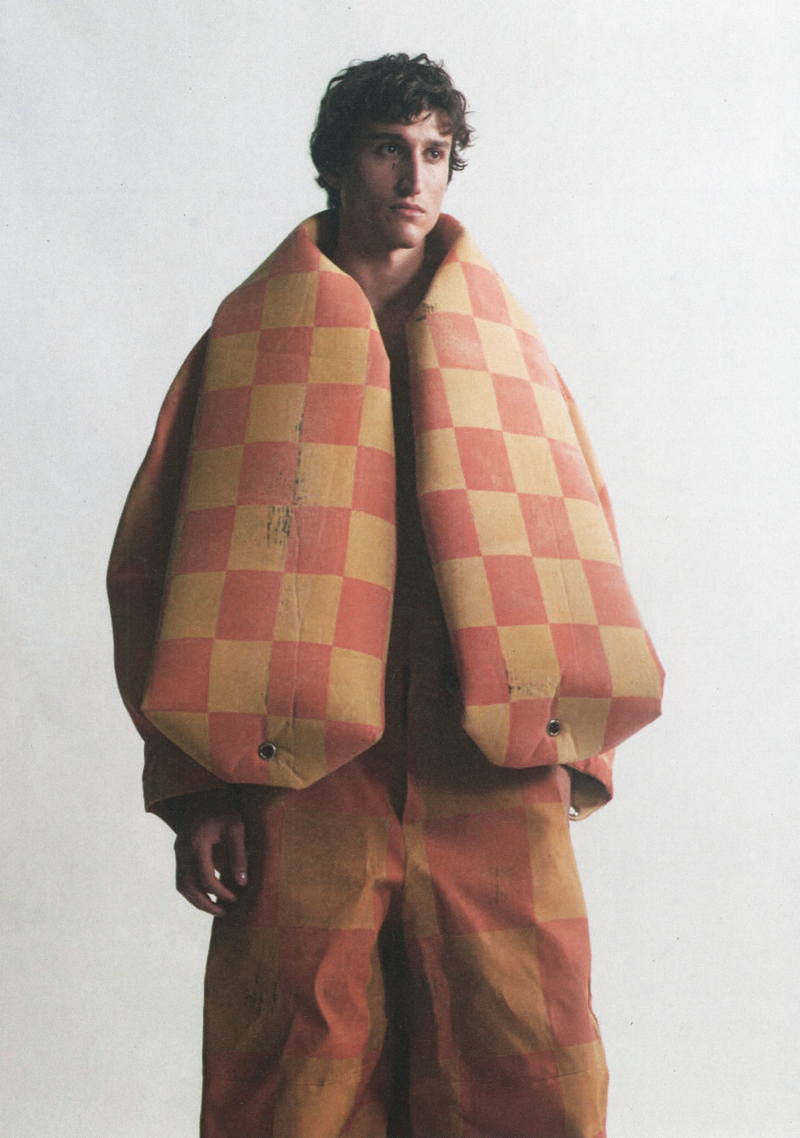
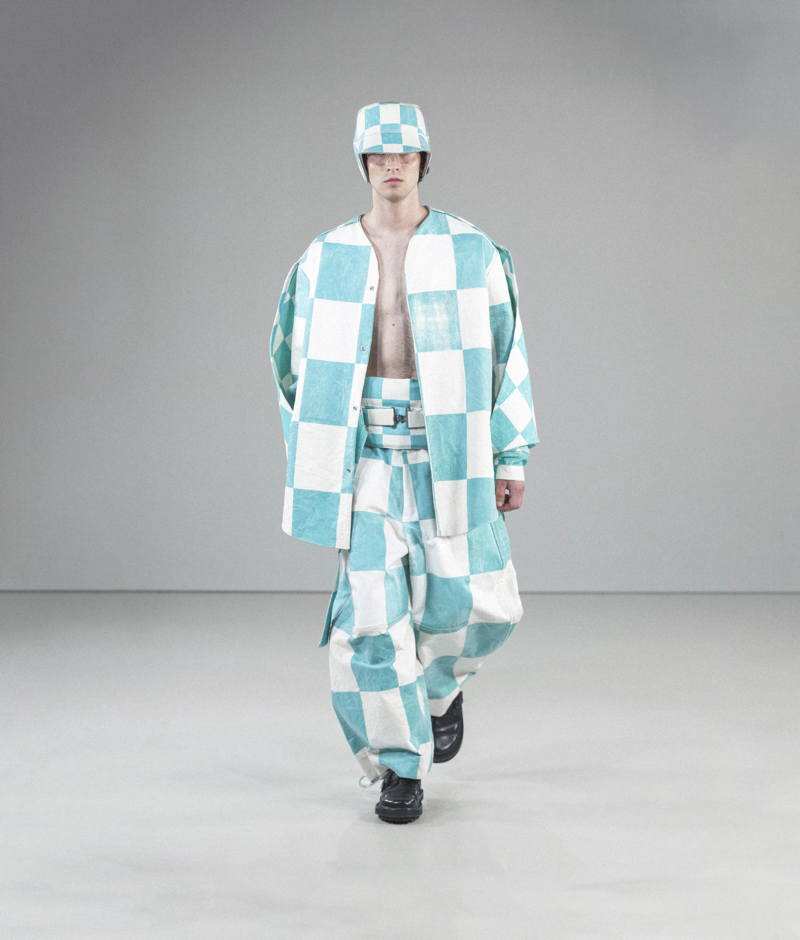
Hightlight Image:
© Sylwia Makris for Esther Perbandt

